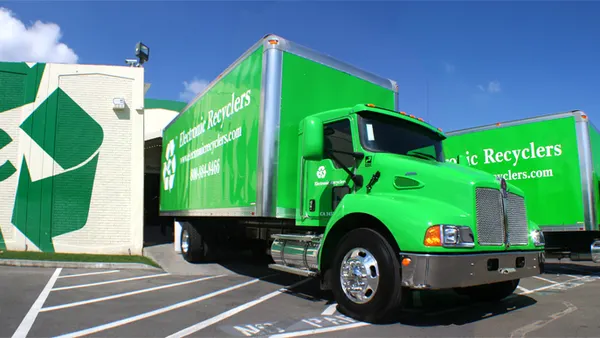Dive Brief:
- A new report from the Healthcare Plastics Recycling Council (HPRC) has found that recovering value from various types of plastic medical waste is possible but presents many logistical challenges. These results come from a multi-month project across five Chicago hospitals in collaboration with the Plastics Industry Association and area recyclers.
- The project focused on non-infectious packaging and products such as sterilization wrap or "blue wrap" made from polypropylene and polyethylene resins, irrigation bottles, basins, pitchers, trays, Tyvek, and rigid and flexible packaging materials. Blue wrap was found to be one of the most common items by volume, followed by flexible plastics, and both were said to have some value when properly separated.
- Waste Management, Lakeshore Recycling Services and Antek Madison received the material for processing. Commingled loads with high contamination rates and low commodity values for some of the materials were identified as the main issues.
Dive Insight:
The HPRC report cites research saying that an estimated one million tons of non-infectious plastic packaging or products could be available for recovery in U.S. hospitals and this follows similar statistics from other sources. One study found that the University of California, San Francisco's neurosurgery department could be wasting nearly $3 million in supplies per year and recommended rethinking usage when possible.
Finding ways to reduce the measured contamination rate of 25-40% per load was identified as a top priority, though like recycling in other settings, much of this comes down to human behavior. People, especially those working in a fast-paced medical setting, may not have the time or incentive to make sure they're sorting the various types of plastic material they're using. RES Polyflow did have some success with an alternative method of capturing value through pyrolysis which could have future potential.
Ongoing research has found various bio-based alternatives to plastic, but few have been proven viable on a large scale yet and integrating them into the medical field would take time. Until the economics of general plastic recycling improve, it will still be cheaper to recover energy from the material - as is the case with other medical waste - rather than recycle it in many regions.











